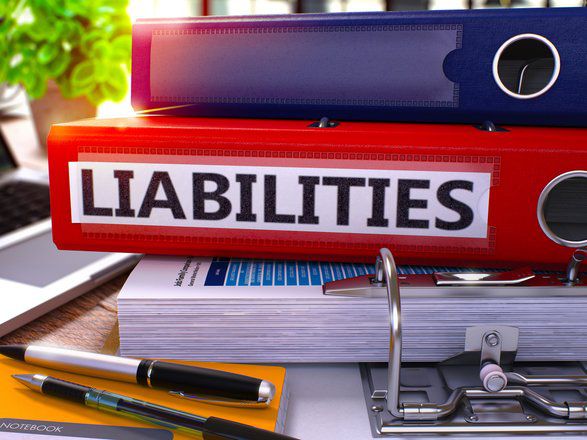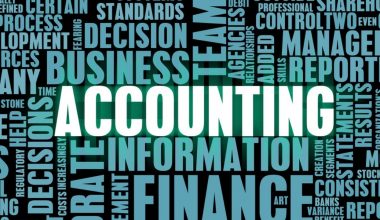Understanding liabilities can be difficult, but it’s essential for anyone looking to manage their finances, protect their assets, and ensure their success. In this article, we’ll cover what liabilities are, the different types, insurance, current, assets and liabilities, and more. By the end, you’ll be well on your way to understanding the basics of liabilities.
What is a Liability vs Asset?
Before we get into the specifics, it’s important to understand the difference between a liability and an asset. An asset is something that adds value to your portfolio, such as a house, a car, or stocks. A liability is something that subtracts from that value, such as a loan, credit card debt, or medical bills.
For example, if you own a house worth $400,000, it’s an asset that adds to your portfolio. But if you owe $200,000 on a mortgage, the loan is a liability. Your house is still worth $400,000, but you’re only able to access $200,000 of that value.
Liabilities Examples
Now that we’ve established the difference between a liability and an asset, let’s look at some common examples of liabilities. One of the most common forms of liabilities is debt. This can include credit card debt, student loans, personal loans, and any other type of loan.
Other liabilities can include unpaid taxes, bills, and financial obligations. For example, if you owe money to the IRS, you have a liability. This can also include any money you owe to a vendor or supplier.
What are the 3 Types of Liabilities?
The three main types of liabilities are current liabilities, long-term liabilities, and contingent liabilities.
Current liabilities are any debts that must be paid within the current year. These can include any short-term loans, accounts payable, income taxes, and other debts that must be paid within 12 months.
Long-term liabilities are any debts that must be paid over a period of more than 12 months. These can include mortgages, car loans, and other long-term debts.
Contingent liabilities are any potential debts or obligations that may or may not be incurred. These can include any legal judgments or settlements that may or may not be made against you.
What is Liquidity?
Assets are sometimes grouped according to their liquidity, or how quickly they may be converted into cash. Cash is the most movable asset on your balance sheet since it may be utilized right away to settle a debt. A factory, on the other hand, is an illiquid asset because it will likely take some time to sell it and turn it into cash.
Current assets are those that are most liquid. These assets, which include cash, marketable securities, inventories, and accounts receivable, can all be turned into cash in less than a year. These resources bring in money for your business.
The category of fixed assets includes all non-liquid assets. They include buildings, automobiles, and equipment. Your company owns fixed assets, which help to generate income but are not used to generate income or retained for cash conversion purposes. Fixed assets are tangible goods that often need a sizable capital investment and last for a considerable amount of time.
Long-Term vs. Current Liabilities
Long-term liabilities are those that are not due for at least a year; current obligations are those that are due within the next year.
Accounts payable, wages and taxes are examples of current obligations, which are sums owed for ongoing costs. Current obligations will also include payments on long-term debt due in the following year. For instance, if your building is subject to a 30-year mortgage, the following year’s worth of payments will be shown under current obligations, and the outstanding balance will be displayed under long-term liabilities.
One of your top priorities as a small business owner will be to balance your books. This means that in order to make wise decisions and assess the health of your company, you need a thorough understanding of assets and liabilities. Understanding assets and liabilities is quite simple once the words are defined, and the financial reports you’ve been producing will start to make more sense.
Liabilities Insurance
When it comes to liabilities, insurance can be a great way to protect yourself. Liability insurance covers any losses or damages that you may incur due to negligence or other types of harm. This type of insurance can be helpful if you’re ever sued or held liable for any type of financial loss.
When someone is responsible and at blame for another person’s injuries or when an insured party destroys another person’s property, liability insurance is essential. Liability insurance is hence sometimes known as third-party insurance. Even if the insured party is held legally liable, liability insurance does not cover willful or illegal activities. Anybody who operates a business operates a vehicle, conducts medicine, or practices law in other words, anyone who could be held liable for losses and/or injuries takes out insurance. Plans cover both the insured and any third parties who may sustain injuries due to the policyholder’s negligent behavior.
Current Liabilities
Current liabilities are any debts that must be paid within the current year. These can include any short-term loans, accounts payable, income taxes, and other debts that must be paid within 12 months.
It’s important to keep track of your current liabilities to ensure that you’re able to pay them on time. Not doing so can lead to late fees, penalties, and other financial repercussions.
Assets and Liabilities
When it comes to your financial health, it’s important to understand the difference between assets and liabilities. Assets are anything that increases your net worth, such as a house, a car, or stocks. Liabilities are anything that decreases your net worth, such as a loan, credit card debt, or medical bills.
Understanding the difference between assets and liabilities can help you make better financial decisions and ensure your financial success.
Examples of assets are –
- Cash
- Investments
- Inventory
- Office equipment
- Machinery
- Real estate
- Company-owned vehicles
Examples of liabilities are –
- Bank debt
- Mortgage debt
- Money owed to suppliers (accounts payable)
- Wages owed
- Taxes owed
Is a Car a Liability or Asset?
A car is typically considered an asset. This is because a car usually increases in value over time, assuming it is well-maintained. Additionally, cars can be used to generate income, such as through ride-sharing services or delivery services.
Is a House an Asset or Liability?
A house is typically considered an asset. This is because a house typically increases in value over time, assuming it is well-maintained. A house can also be used to bring in money, like by renting it out or selling it.
Is Land an Asset or Liability?
Land is typically considered an asset. This is because land can increase in value over time, depending on its location. Additionally, land can be used to generate income, such as through farming or developing it.
Which Assets are Liabilities?
Some assets can also be considered liabilities. This includes credit cards, car loans, and other forms of debt. These assets can subtract from your net worth, as you are required to pay them back with interest.
What are 3 Current Liabilities?
The three main types of current liabilities are accounts payable, income taxes, and short-term loans.
Accounts payable are any amounts that you owe to your suppliers or vendors. Income taxes are any taxes that you owe to the government. Short-term loans are any loans that must be paid within 12 months.
Types of Current Liabilities
Current liabilities that are regularly seen include:
Accounts Payable
A company’s obligations to its creditors and suppliers on a short-term basis are represented by accounts payable (AP). It is listed as a current liability on the balance sheet. The entire sum owed to suppliers or vendors for unpaid invoices is represented by accounts payable.
Normally, suppliers provide customers terms of 15, 30, or 45 days to pay, which allows the buyer to obtain the products while deferring payment. These invoices serve as a short-term loan from a vendor and are listed in accounts payable. A business can increase revenue from the sale of supplies and better manage its cash requirements by giving itself time to pay off an invoice.
For their cash flow, suppliers would prefer shorter terms so that they get paid sooner rather than later. Suppliers will even give discounts to businesses that pay on time or early. For instance, if a supplier offers terms of “3%, 30, net 31,” it signifies that a business receives a 3% discount for paying 30 days in advance and owes the whole amount if it waits until 31 days after that.
On the other hand, businesses might use accounts payables as a means to increase their cash flow. To increase their short-term cash flow, businesses may strive to extend the terms or the period of time needed to pay off their payables to their suppliers.
Accrued Costs
Costs of expenses that have been incurred but have not yet been reimbursed are known as accrued expenses. The accrual method of accounting is used for accrued expenses, which means that costs are recorded as incurred rather than paid.
Because they are short-term financial commitments, accrued expenses are included in the balance sheet’s current liabilities column. Businesses frequently pay their employees using cash or other current assets, such as short-term assets.
Examples Accrued Costs
Accrued expenses include, for instance:
Buying supplies from a vendor but not yet receiving an invoice to pay for it
Interest charges on debts that are coming due soon
a service or product under warranty that has not yet been completely compensated
accumulated real estate and property taxes for the time period
federal, state, and municipal taxes accumulated
accumulated employee salaries, commissions, and bonuses for a period that could be paid at a later time, like the period after.
Taxes Payable
Taxes owed by businesses come in many forms, and they are listed as short-term liabilities. Ones who owe taxes most frequently include Government income taxes that are still owing and must be paid.
Unpaid payroll taxes that have been withheld from employees
Sales taxes payable are the taxes that they receive from their clients and pay to the government.
Short-Term Debt
The sum of all debt payments due within the next year is often referred to as short-term debt. When assessing a company’s financial health, it’s vital to consider how much short-term debt it has in comparison to long-term debt. Consider the possibility that the total debt of two businesses operating in the same sector is equal.
But if a business has a lot of short-term debt, it can experience cash flow problems if not enough money is brought in to cover its obligations.
Additionally, if cash flow is predicted to be tight throughout the course of the following year, the corporation may not pay or at least not raise its dividend. Dividends are monetary rewards given by businesses to their shareholders for purchasing their stock.
Types of Short-Term Debt
A corporation may also issue commercial paper as a short-term financial product. Unsecured debt is frequently used to pay for inventory purchases or other short-term or current commitments like accounts payable.
Short-term bank loans used to increase the company’s capital can be considered short-term debt. Even though they are recorded as different line items, short-term loans include overdraft credit lines for bank accounts and other short-term advances from a financial institution. A current liability also includes the percentage of long-term debt that is due this year.
Payroll Liabilities
Payroll Liabilities that are due within the year may fall under the purview of the company. These Liabilities may include employee Medicare deductions. Current obligations may also include employee benefits like premiums for health insurance or retirement plans.
Unearned Income
Unearned income is money that a business receives or pays for a good or service that has not yet been supplied or rendered. Due to the fact that unearned revenue is a form of debt due to the consumer, it is recorded as a current liability. The unearned revenue is recorded as revenue on the income statement after the service or product has been delivered.
Conclusion
I am certain that by now you understand what liabilities are—different types of liabilities, liabilities insurance, current liabilities, assets and liabilities, and more. If you know the basics about liabilities, you can take the steps you need to protect yourself and your future finances.
- SMALL BUSINESS ACCOUNTING SOFTWARE: Meaning, Best Software & Degree
- ACCOUNTS PAYABLE PROCESS: How to Manage the Process Effectively
- How to Calculate Net Worth: Step-by-Step Guide
- ACCOUNTS PAYABLE JOB DESCRIPTION: What You Should Know
- WHAT ARE ASSETS AND LIABILITIES: Definition, Differences and Examples






